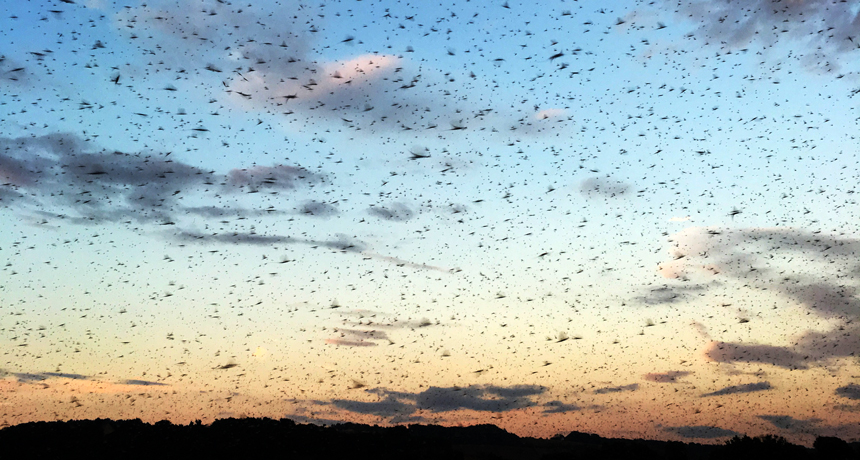Confused mayflies wreak havoc on a Pennsylvania bridge

Mayflies swarming a central Pennsylvania bridge over the Susquehanna River are a good thing, and a bad thing. Before the 1972 Clean Water Act, the river was too polluted to support the primitive aquatic insects. So their comeback is a sign that the water is healthier, says forensic entomologist John Wallace of nearby Millersville University.
But those swarms have become a nighttime menace for people driving or walking across the Columbia-Wrightsville bridge — thanks to the 2014 installation of large, 1930-era lamps along the two sides of the bridge. Soon after the lights were added, adult mayflies of the species Hexaginia bilineata began invading — causing blizzard-like conditions on the 2-kilometer overpass. The swarms were so intense in 2015, the bridge was closed following three accidents, and bulldozers were brought in to remove knee-deep piles of insect carcasses.
Local officials have since tried to cope by occasionally turning off the lights, but this is problematic on a high-traffic bridge, says Wrightsville borough president Eric White. So Wallace was called in this year to make sense of the mayfly madness.
Wallace says he and undergraduate student Marisa Macchia have been collecting specimens from both sides of the bridge, and “comparing the mayfly abundance and diversity when lights are on versus when lights [are] off.” The researchers are trying to determine the swarm density per hour from the start of the emergence to the end.
As larvae, mayflies drift downstream with the water current, Wallace says. When the adults emerge from the water, they fly upriver, following the water’s moonlit path of polarized light. At the end of their adult life spans of 24-48 hours, the insects mate and the females drop to the water’s surface — dying while releasing their eggs to the silt below.
But that bridge, with those lamps, is breaking that path of polarized light, luring the mayflies up to the structure and causing the confused insects to perform their “drop, deposit and die” routine on the road.
“Any human light … car light, street light — are examples of unpolarized light,” Wallace says. But when reflected off asphalt or car paint, it resembles the river’s polarized light.
Wallace’s research will inform blueprints for renovating the historic bridge, White says. The goal is ultimately to guide the mayflies back to the river’s surface.